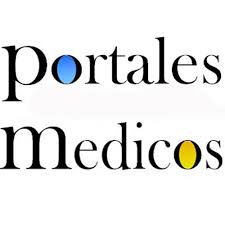VPA technique: una propuesta biofísica de terapia intradérmica
Resumen
En la actualidad el conocimiento a profundidad de la multifuncionalidad que poseen los distintos elementos celulares y elementos de la matriz extracelular en la piel, nos llevan a comprender qué tipo de actividad debemos establecer en las distintas capas constituyentes de este órgano con el fin de restablecer diferentes funciones y características que mantienen la integridad y contribuyen con los procesos que puede contribuir a aminorar los signos de envejecimiento cutáneo. Basa sus principios en reconformación del tejido conectivo constituyente de la fascia, en el tejido superficial “retinacula cutis”, puede ser una gran alternativa para armonizar el equilibrio de fuerzas en los tejidos que confieran como consecuencias mejorías en las alteraciones que se producen como elementos del envejecimiento y constituyen signos visibles del mismo. valoración prospectiva para la valoración de la técnica para lo cual fueron reclutadas 56 pacientes, 42 femeninos y 14 masculinos, en edades comprendidas entre 45 a 75 años, sin antecedentes importantes de patologías sistémicas ni dermatológicas, los cuales no habían realizado procedimientos estéticos en los últimos 6 meses y no referían antecedentes de aplicación de rellenos no reabsorbibles a nivel facial en ningún momento. La administración bajo un sistema algorítmico busca establecer sistemas de recuperación en las áreas que proporcionan la mayor contracción y sostén del tejido y de esa manera contribuir a los efectos benéficos. Queda una puerta abierta para seguir experimentando con la forma de aplicación propuesta para avanzar en la demostración de los posibles cambios experimentados en esta primera serie de pacientes.
Recibido: 9/06/2021
Aprobado: 30/06/2021
Palabras clave
Texto completo:
PDFReferencias
Pistor M. What is mesotherapy? Chir Dent Fr. 1976; 46:59–60. [PubMed: 1076080]
El-Domyati M, El-Ammawi TS, Moawad O, El-Fakahany H, Medhat W, Mahoney MG, Uitto J. Efficacy of mesotherapy in facial rejuvenation: a histological and immunohistochemical evaluation. Int J Dermatol. 2012 Aug;51(8):913-9.
Amin SP, Phelps RG, Goldberg DJ. Mesotherapy for facial skin rejuvenation: a clinical, histologic, and electron microscopic evaluation. Dermatol Surg. 2006 Dec;32(12):1467-72.
Ahmed NA, Mohammed SS, Fatani MI. Treatment of periorbital dark circles: Comparative study of carboxy therapy vs chemical peeling vs mesotherapy. J Cosmet Dermatol. 2019 Feb;18(1):169-175.
Deglesne PA, Arroyo R, Ranneva E, Deprez P. In vitro study of RRS HA injectable mesotherapy/biorevitalization product on human skin fibroblasts and its clinical utilization. Clin Cosmet Investig Dermatol. 2016 Feb 23;9:41-53.
Kim S, Kye J, Lee M, Park B. Evaluation of mesotherapy as a transdermal drug delivery tool. Skin Res Technol. 2016 May;22(2):158-63.
Tedeschi A, Lacarrubba F, Micali G. Mesotherapy with an Intradermal Hyaluronic Acid Formulation for Skin Rejuvenation: An Intrapatient, Placebo-Controlled, Long-Term Trial Using High-Frequency Ultrasound. Aesthetic Plast Surg. 2015 Feb;39(1):129-33.
Prikhnenko S. Polycomponent mesotherapy formulations for the treatment of skin aging and improvement of skin quality. Clin Cosmet Investig Dermatol. 2015 Apr 7;8:151-7.
Friedman M, Fiedman B. Cell communication: understanding how information is stored and used in cells. 1st ed. New York: Rosen Publishing Group; 2005.
Salomon D, Saurat JH, Meda P. Cell-to-cell communication within intact human skin. J Clin Invest. 1988 Jul;82(1):248-54.
Tandara AA, Mustoe TA. MMP- and TIMP-secretion by human cutaneous keratinocytes and fibroblasts--impact of coculture and hydration. J Plast Reconstr Aesthet Surg. 2011 Jan;64(1):108-16.
Carrasco E, Soto-Heredero G, Mittelbrunn M. The Role of Extracellular Vesicles in Cutaneous Remodeling and Hair Follicle Dynamics. Int J Mol Sci. 2019 Jun 5;20(11):2758.
Riau AK, Ong HS, Yam GHF, Mehta JS. Sustained Delivery System for Stem Cell-Derived Exosomes. Front Pharmacol. 2019 Nov 14;10:1368.
Keith Waterst, Demetri Terzopoulos. A Physical Model of Facial Tissue and Muscle Articulation. THO31 1-1/90/0000/0077/$01.O O 0 1990 IEEE.
Bordoni B, Mahabadi N, Varacallo M. Anatomy, Fascia. In: StatPearls. Treasure Island (FL): StatPearls Publishing; August 10, 2020.
Makrantonaki E, Zouboulis CC. Molecular mechanisms of skin aging: state of the art. Ann. N. Y. Acad. Sci. 1119 (2007) 40–50.
Longo C, Casari A, Beretti F, Cesinaro AM, Pellacani G. Skin aging: in vivo microscopic assessment of epidermal and dermal changes by means of confocal microscopy, J. Am. Acad. Dermatol. 68 (2013) e73–e82.
Contet-Audonneau JL, Jeanmaire C, Pauly G. A histological study of human wrinkle structures: comparison between sun-exposed areas of the face, with or without wrinkles, and sun-protected areas. Br. J. Dermatol. 140 (1999) 1038–1047.
Bernstein EF, Yue Qiu Chen, Kopp JB, Fisher L, Brown DB, Hahn PJ, Robey FA, Lakkakorpi J, Uitto J. Long-term sun exposure alters the collagen of the papillary dermis:
comparison of sun-protected and photoaged skin by Northern analysis immunohistochemical staining, and confocal laser scanning microscopy. J. Am. Acad. Dermatol. 34 (1996) 209–218.
Makrantonaki E, Zouboulis CC. Characteristics and pathomechanisms of endogenously aged skin. Dermatology 214 (2007) 352–360.
Diridollou S, Vabre V, Berson M, Vaillant L, Black D, Lagarde JM, Grégoire JM, Gall Y, Patat F. Skin ageing: changes of physical properties of human skin in vivo. Int. J. Cosmet. Sci. 23 (2001) 353–362.
Hinek A, Braun KR, Liu K, Wang Y, Wight TN. Retrovirally mediated overexpression of versican v3 reverses impaired elastogenesis and heightened proliferation exhibited by fibroblasts from Costello syndrome and Hurler disease patients. Am J Pathol. 2004;164:119–131.
Kielty CM, Sherratt MJ, Shuttleworth CA. Elastic fibres. J Cell Sci. 2002;115:2817–2828. 24. Quan T, Wang F, Shao Y, Rittié L, Xia W, Orringer JS, Voorhees JJ, Fisher GJ. Enhancing structural support of the dermal microenvironment activates fibroblasts, endothelial cells, and keratinocytes in aged human skin in vivo. J Invest Dermatol. 2013;133(3):658-667.
DOI: https://www.doi.org/10.53766/AcBio/Se encuentra actualmente indizada en: | |||
 |  |  | |
  |  |  |  |
 |  |  |  |
 |  |  | |
![]()
Todos los documentos publicados en esta revista se distribuyen bajo una
Licencia Creative Commons Atribución -No Comercial- Compartir Igual 4.0 Internacional.
Por lo que el envío, procesamiento y publicación de artículos en la revista es totalmente gratuito.




